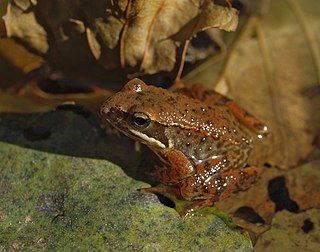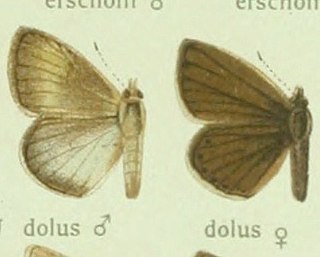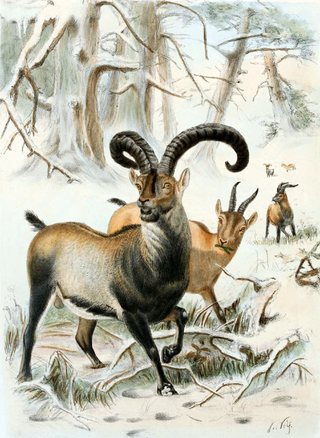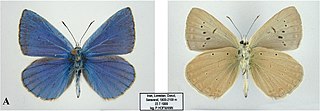
The common blue butterfly or European common blue is a butterfly in the family Lycaenidae and subfamily Polyommatinae. The butterfly is found throughout the Palearctic and has been introduced to North America. Butterflies in the Polyommatinae are collectively called blues, from the coloring of the wings. Common blue males usually have wings that are blue above with a black-brown border and a white fringe. The females are usually brown above with a blue dusting and orange spots.

The chalkhill blue is a butterfly in the family Lycaenidae. It is a small butterfly that can be found throughout the Palearctic realm, where it occurs primarily in grasslands rich in chalk. Males have a pale blue colour, while females are brown. Both have chequered fringes around their wings.

Polyommatus is a genus of butterflies in the family Lycaenidae. Its species are found in the Palearctic realm.

Polyommatus eros, the Eros blue or common meadow blue, is a species of blue butterfly found in the Palearctic.

The Iberian frog, also known as Iberian stream frog, is a species of frog in the family Ranidae found in Portugal and Spain. Its natural habitats are rivers, mountain streams and swamps. It is threatened by habitat loss, introduced species, climate change, water contamination, and increased ultraviolet radiation.

Plebejus argyrognomon, common name Reverdin's blue is a butterfly of the family Lycaenidae. The species is named after Jacques-Louis Reverdin.

Polyommatus damon, the Damon blue, is a butterfly of the family Lycaenidae.

Polyommatus dolus, the furry blue, is a butterfly of the family Lycaenidae. It is found in Spain, in France and Italy.

Ripart's anomalous blue is a butterfly in the family Lycaenidae.

Polyommatus (Plebicula) dorylas, the turquoise blue, is a butterfly of the family Lycaenidae. It is found in southern Europe, Asia Minor, the Ural Mountains, Caucasus and Transcaucasia. Its wingspan is 15–17 mm. The butterfly's common name comes from the dazzling bright blue colour of male's wings. The larvae feed on Anthyllis vulneraria. The butterfly flies from May to September in two generations. Habitats include flowery meadows in rocky areas at 500–2000 m.

Polyommatus thersites, the Chapman's blue, is a butterfly in the family Lycaenidae. It is found in southern Europe, Morocco, Lebanon, Asia Minor, Iran and across the Palearctic to Siberia and Tian Shan.

Polyommatus nivescens, the mother-of-pearl blue, is a species of butterfly in the family Lycaenidae. It is found in Spain. It is a small butterfly is sexual dimorphic. The upperside of the male is very clear, with just a bluish beige reflection bordered by a thin grey line and a marginal line of small grey dots. The female upperside is brown, decorated with a marginal line of large orange maculae bordering the hindwings and part of the forewings. Both have a white fringe. The underside is light ochre marked with a marginal line of white lunules topped with orange, and adorned with a line of black dots circled in white very marked on the fore.

Polyommatus admetus, the anomalous blue, is a butterfly of the family Lycaenidae. It was described by Eugenius Johann Christoph Esper in 1783. It is found in south-eastern Europe and Turkey.

Polyommatus (Agrodiaetus) violetae, the Andalusian anomalous blue, is a species of butterfly in the family Lycaenidae. It is found in the south and south-east of Spain. Adults are on wing from July to August.
Polyommatus (Plebicula) sagratrox, the Sierra de la Sagra blue, is a species of butterfly in the family Lycaenidae. It is endemic to Spain in the south-east of the Iberian Peninsula.

The Pyrenean ibex, Aragonese and Spanish common name bucardo, Basque common name bukardo, Catalan common name herc and French common name bouquetin, was one of the four subspecies of the Iberian ibex or Iberian wild goat, a species endemic to the Pyrenees. Pyrenean ibex were most common in the Cantabrian Mountains, Southern France, and the northern Pyrenees. This species was common during the Holocene and Upper Pleistocene, during which their morphology, primarily some skulls, of the Pyrenean ibex was found to be larger than other Capra subspecies in southwestern Europe from the same time.

Polyommatus karindus is a butterfly of the family Lycaenidae. It was described by Norman Denbigh Riley in 1921. It is only known from the Iranian Zagros Mountains. The habitat consists of dry slopes, gorges and plateaus with xerophyte or steppe vegetation, sometimes wooded areas from 1,800 up to 2,800 meters.

Polyommatus damone is a Palearctic butterfly in the Lycaenidae family.
Polyommatus nephohiptamenos, or Higgins's anomalous blue, is a butterfly of the family Lycaenidae described by J. Brown and John G. Coutsis in 1978. It has an IUCN Red List status of near threatened.

















